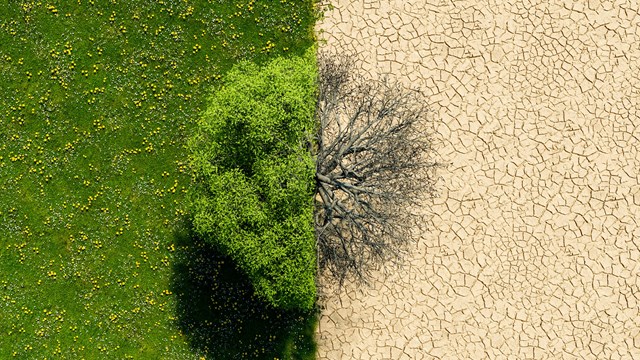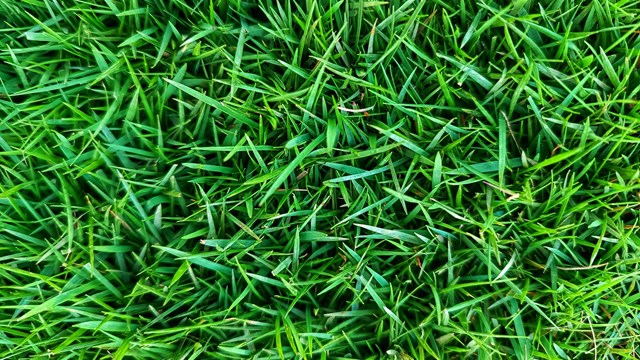City life can be hard—especially on plants. You laugh? Well, think about it. There’s limited room to grow, all kinds of pollution, sun-blocked settings…it’s no wonder plant life has to be extra-hardy to make it in city environments. And that’s not limited to weeds.
Like their suburban and rural counterparts, city dwellers like to see a splash of green and tranquility in their angular, hard-edged landscape, and will introduce plant life wherever they can: from window planters to roof decks to creating a quiet refuge in any courtyard space they have. The problem for the plants—and by extension, urban landscapers—is keeping those plants alive and thriving in the urban desert. Success depends on several factors, including choosing the right species, putting it in the right place, and caring for it in the right way. Miss one of those factors, and your urban oasis will be a withered wasteland in short order.
Harsh Environments
To the uninitiated, an urban landscape looks like it should be able to sustain the same plant life as any other spot located in the same climate belt—but that’s not the case. Urban gardening spaces are more often than not located on the rooftops of buildings, or in ‘courtyards’ originally designed as airshafts, with limited light and exposure. Rarely does a multifamily residential building in a city environment include a large patch of actual terra firma with light and air on all (or even most) sides that can be used as a proper garden. When space is sharply limited, such a spot is simply too valuable to give up for flower beds and shrubbery.
To a plant, the dense, heavily-paved cityscape might as well be a desert, or the top of an alpine peak, says Rani Dorman, owner of Blooming Urban Design Scapes, a landscaping company based in New York and specializing in urban gardens. “Rooftops are kind of akin to mountaintops—except on a mountain, the wind comes from all directions, not only one, which is more common in New York. Also, sunlight is more intense on a New York rooftop than it is at ground level, and it’s always colder. You have to pick your plants accordingly.”
“Rooftops can be similar to a desert environment,” adds Brian Churchill, co-founder and COO of GroundsKeeper, a landscaping firm located in Ashland, Massachusetts. “They tend to be dry and windy. When you get up on the roofs, it’s very dry. Despite the rain, the environment is different. Soil can heat up, cool down, or get really wet, like in a desert, not a typical Northeastern ground level garden. And there’s a lot more wind—so the plant material has to be tough.”
“When choosing plants for a courtyard or a roof, one must also look at the irrigation situation,” says Lou Caggiano, CEO of LCC Landscapes located in Fairfield, New Jersey. “Is the area irrigated? Or can it be? Generally speaking, plants on a roof are more exposed to weather than on the ground. We choose plant material that is resistant to drought, such as black-eyed susans or daylilies, and evergreens, such as juniper. Plants that will withstand the hot dry summers and cold dry winters.” So the concrete jungle is really more of an arid moonscape.
Logistics
For landscapers and landscape architects, the single biggest challenge in urban environments is the actual logistics of getting the plants, planters, soil, tools, and other necessary gear and supplies onto the roof or into the courtyard. For starters, say the pros, parking is a nightmare.
“There’s a lot involved with going out to get the plants, planters, and other materials,” Dorman says. “We have to rent a truck and go outside of the city to buy everything. And of course you can’t just pull up and park a truck in New York City. Then there’s no standing when we make a delivery. If we are doing a rooftop, we may be doing 20 or 25 boxwoods—and we can’t do that kind of purchasing on East 28th Street in the traditional Flower District. We need a huge selection of plants, so we have to leave at six in the morning to go to the nurseries, which are one to two hours away. It’s not just about the price—it’s about the quality. Which is why we have to go to buy the plant materials at nurseries, and not Home Depot.”
“The logistics are a nightmare,” agrees Caggiano. “Getting the material to the buildings is difficult. We’re often using freight elevators—and in some cases we need cranes. The planters need soil, which has to be piped up to the roof, or brought up in bales. A lot of time is spent getting materials to the roof. We did a job at Hudson Point in River’s Edge where we went through the lobbies and freight elevators, and every part of the building we walked through was lined with plastic. It took a crew of 25 workers a whole day just to get the plant materials to the roof. The actual planting time of all that material was a half-day for four workers.” “Putting plants on the roof adds 75 percent more to the cost of plants and materials,” Caggiano continues. “Time for labor on a roof project is roughly double what it would be for a suburban ground-level garden. Getting the materials up to the roof is quicker with a crane. Freight elevators take much longer. But cranes, obviously, are an additional expense.”
Churchill concurs. “Rooftop work presents a whole other world of logistical issues,” he says. “You may have a job that at ground level would take an hour, but you may have as much time or more spent just going up and down. You can’t just unpack a truck like at ground level—you have to consider building entrances, security, elevators, and how and where to store materials. You have to plan it all out beforehand, including scheduling and timing. It takes more time to do the work in this setting.”
Care & Feeding
Another aspect of rooftop and courtyard gardens is choosing plants and knowing how to maintain them. As mentioned, both environments require hardy species that don’t require much water and attention.
“What grows on a hillside in New Jersey won’t survive on a roof,” points out Caggiano. “It doesn’t have the hardiness. You need to fertilize frequently, and you really can’t mulch on a roof because of weight. You need organic fertilizer, because soil in planters must be augmented often. We choose smaller trees as well, both for weight considerations and overall hardiness.” Even still, he says, “They generally live five years or so.”
From Churchill’s standpoint, it’s all about proper plant selection. “You can find the proper plants for any environment—ones that are more sun or wind tolerant,” he says. “You have a lot more work to do if you don’t do this. [Chosen plants] should not have as much leaf surface area—so not holly, for instance. Rather something with needles for the wind. Proper plant selection is going to lead to better results. There’s also lots of plant replacement involved with these types of gardens. If you have a plant that just doesn’t work up there, you can do everything and that plant won’t live.”
“You always need the right zone plants,” explains Dorman. “You need to know what the coldest and warmest temperatures are going to be in your region. For example, New York City is in climate Zone Six—but that has changed dramatically due to climate change. We can push things now that we couldn’t plant before. We now plant Zone Seven, which historically was south of here. But on roofs there are other considerations. It’s high up, you get lots of wind, and you have to consider that. There are often dangerous temperature changes now as well, again due to climate change. For instance, it was five degrees this past Christmas Eve, then 50 degrees the next day. Plants are not prepared for that. There’s little you can do to protect the plants from that, other than mulching when you close down before winter. Proper winter pruning is key, and also anti-defecate spray on ground-level evergreen leaves to save them from pet waste.”
And speaking of living threats to plantings…another problem, Dorman points out, is pests. “Previously, when the weather got cold, pests and fungi went dormant, but now that it’s warmer, they don’t. They are multiplying faster, staying longer, and doing more damage. The spotted lanternfly, for instance, was an anomaly. The quantity in which it arrived was overwhelming. There was no real treatment for it. Pests are adapting more easily now because it’s warmer.”
“Often,” says Caggiano, “the residents don’t understand that they need to maintain the garden, and not just leave it to nature. They need a maintenance plan to extend the life of the garden. Maintenance costs money in the short-term, but it will save money in the long-term by extending the life of the plant materials.”
In the final analysis, urban dwellers are seeking a splash of nature and color in their lives. They have limited options as to where to put these little oases. Rooftops and courtyards are generally their best choices. What they must keep in mind is that these oases require care and work—and will return much joy.
A J Sidransky is a staff writer/reporter for CooperatorNews, and is a published novelist. He can be reached at alan@yrinc.com.










Leave a Comment